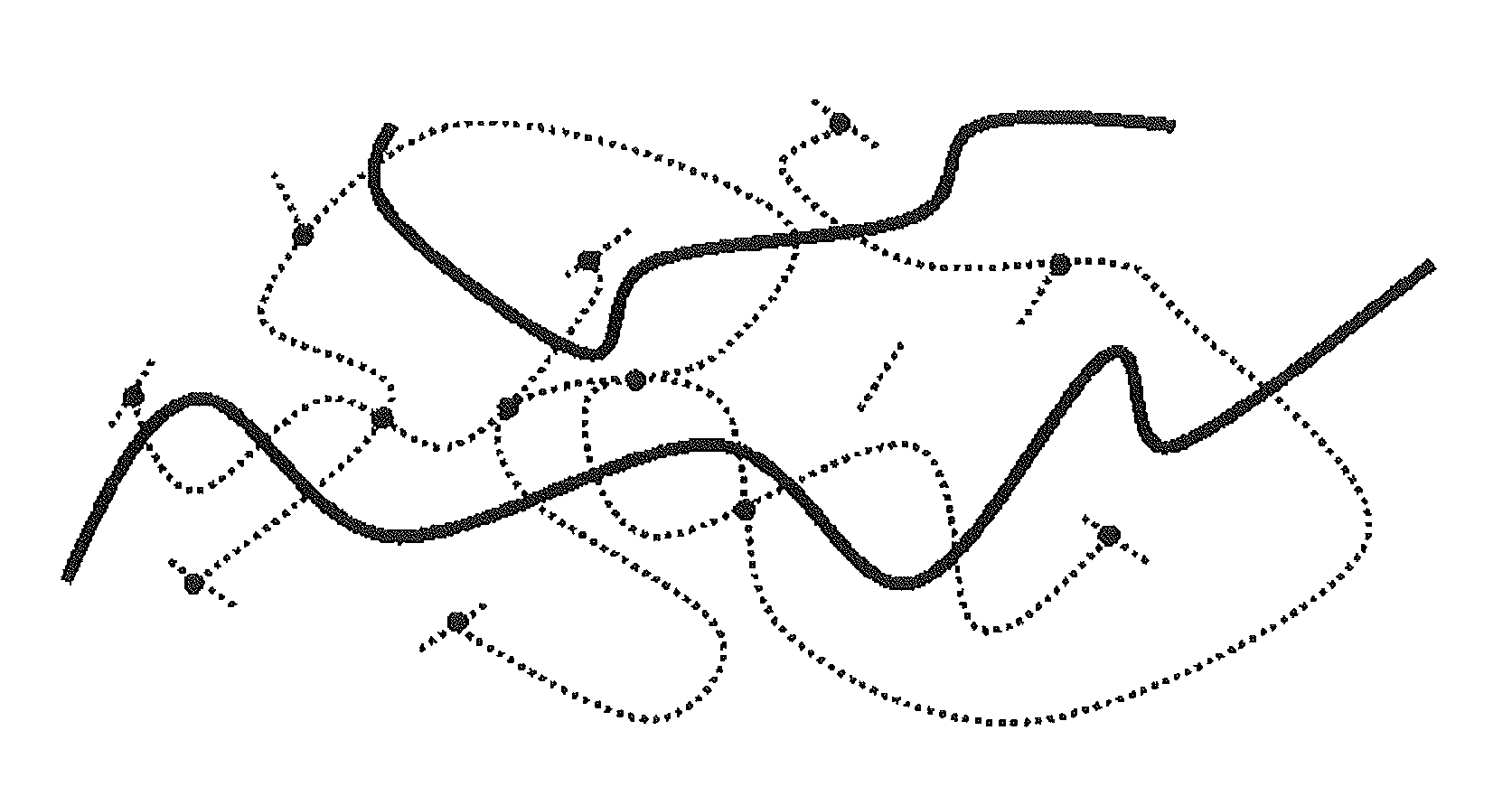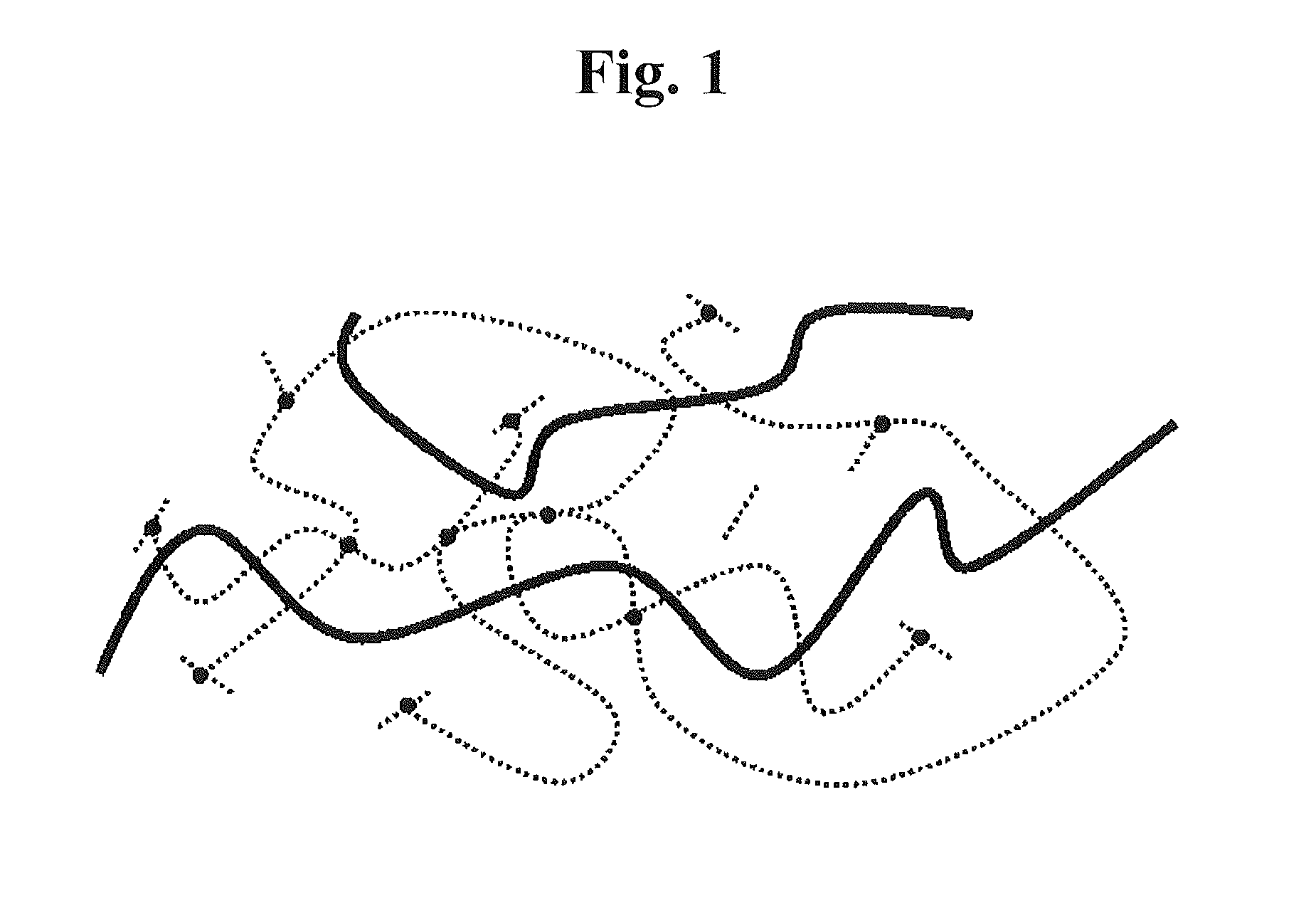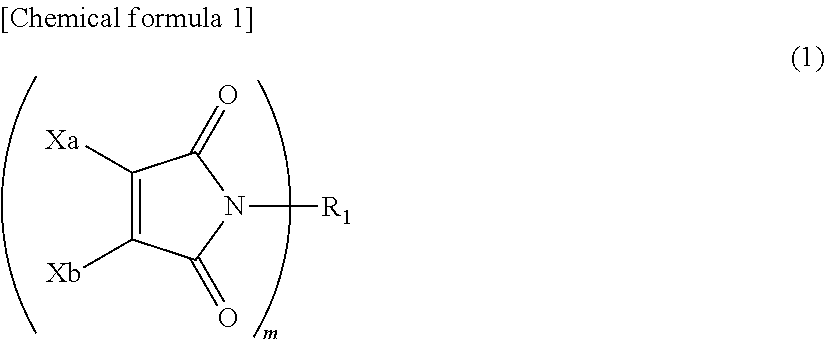Process for producing resin varnish containing semi-ipn composite, thermosetting resin and, provided using the same, resin varnish for printed wiring board, prepreg and metal-clad laminate
a technology of thermosetting resin and resin varnish, which is applied in the direction of resistive material coating, synthetic resin layered products, elastomeric polymer dielectrics, etc., can solve the problems of large loss, unsatisfactory workability of fluororesin, dimensional stability, and adhesion to metal plating, and achieve excellent heat resistance, excellent high frequency properties, and excellent moisture absorption.
- Summary
- Abstract
- Description
- Claims
- Application Information
AI Technical Summary
Benefits of technology
Problems solved by technology
Method used
Image
Examples
preparation example 1
[0133](a) In a one-liter separable flask equipped with a thermometer, a reflux condenser, a vacuum evaporator, and a stirrer were placed 350 parts by weight of toluene and 50 parts by weight of polyphenylene ether (S202A, manufactured by Asahi Kasei Chemicals Corporation; Mn: 16,000) as component (A), and the solid component was dissolved by stirring at a temperature of 90° C. inside the flask. Then, to the resultant solution were added 100 parts by weight of a chemically unmodified butadiene polymer (B-3000, manufactured by NIPPON SODA CO., LTD.; Mn: 3,000; 1,2-vinyl structure: 90%) as component (B), 40 parts by weight of bis(4-maleimidophenyl)methane (BMI-1000, manufactured by DAIWA KASEI CO., LTD.) as component (C), and methyl isobutyl ketone (MIBK) as a solvent in such an amount that the solids content (nonvolatile content) of the resultant solution became 30% by weight, and stirring was continued and dissolution or uniform dispersion of the components was confirmed. Then, the t...
preparation example 2
[0135](a) A polyphenylene ether-modified butadiene prepolymer was obtained in substantially the same manner as in Preparation Example 1 except that, instead of the bis(4-maleimidophenyl)methane used in item (a) of Preparation Example 1, 30 parts by weight of polyphenylmethanemaleimide (BMI-2000, manufactured by DAIWA KASEI CO., LTD.) was used. A conversion rate of BMI-2000 in the polyphenylene ether-modified butadiene prepolymer solution was measured by gel permeation chromatography. As a result, it was found that the conversion rate was 35%.
[0136](b) Subsequently, into 50 parts by weight of MIBK as component (F) were mixed 110 parts by weight of spherical silica (SO-25R, manufactured by Admatechs Co., Ltd.; average particle size: 0.5 μm) as component (D), 2.4 parts by weight of p-styryltrimethoxysilane (KBM-1403, manufactured by Shin-Etsu Chemical Co., Ltd.), and 120 parts by weight (30 parts by weight in terms of the solids) of a solution of a saturated thermoplastic elastomer {hy...
preparation example 3
[0137](a) A polyphenylene ether-modified butadiene prepolymer was obtained in substantially the same manner as in Preparation Example 1 except that, instead of the bis(4-maleimidophenyl)methane used in item (a) of Preparation Example 1, 35 parts by weight of 2,2-bis[4-(4-maleimidophenoxy)phenyl]propane (BMI-4000, manufactured by DAIWA KASEI CO., LTD.) was used. A conversion rate of BMI-4000 in the polyphenylene ether-modified butadiene prepolymer solution was measured by gel permeation chromatography. As a result, it was found that the conversion rate was 25%.
[0138](b) Subsequently, a resin varnish (solids content: about 40% by weight) in Preparation Example 3 was prepared in substantially the same manner as in Preparation Example 1 except that, instead of KBM-1003 used as a surface treatment agent as component (D) in item (b) of Preparation Example 1, N-phenyl-3-aminopropyltrimethoxysilane (KBM-573, manufactured by Shin-Etsu Chemical Co., Ltd.) was used, and that, instead of H1043 ...
PUM
| Property | Measurement | Unit |
|---|---|---|
| viscosity | aaaaa | aaaaa |
| operating frequency | aaaaa | aaaaa |
| melt temperature | aaaaa | aaaaa |
Abstract
Description
Claims
Application Information
 Login to View More
Login to View More - R&D
- Intellectual Property
- Life Sciences
- Materials
- Tech Scout
- Unparalleled Data Quality
- Higher Quality Content
- 60% Fewer Hallucinations
Browse by: Latest US Patents, China's latest patents, Technical Efficacy Thesaurus, Application Domain, Technology Topic, Popular Technical Reports.
© 2025 PatSnap. All rights reserved.Legal|Privacy policy|Modern Slavery Act Transparency Statement|Sitemap|About US| Contact US: help@patsnap.com



